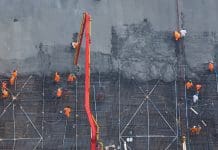The UKGBC has published its ‘Principles for delivering urban Nature-based Solutions’ (NBS) to help developers and owners increase the incorporation of NBS in construction
The purpose of UKGBC’s latest report is to provide a concise overview of practical methods and best practice examples that empower influencers and decision-makers within built environment organisations to increase the use of urban NBS as a means of ensuring climate resilience and enhancing nature.
The report sets out six ‘principles’ for delivering urban NBS, ranging from strategic inception to considerations of physical and financial risk assessment, short-term funding, long-term management and future research and innovation needs.
The development and function of the built environment has significant impacts upon both climate and biodiversity, locally and globally, and the pressure for our industry to be part of the solution is accelerating.
The recommendations of the Taskforce for Climate-related Financial Disclosure (TCFD) have led to a growing requirement to measure and mitigate the physical risks to built assets from climate change, such as flooding and overheating.
The forthcoming Environment Bill will legislate for biodiversity net gain on new developments, while communities within our towns and cities are requesting more green space and nature, driven in part by the effects of Covid-19.
Urban nature-based solutions can provide an answer to these demands from finance, business, regulators, and communities, and this is recognised within the themes of this November’s international climate conference, COP26.
Adapt to a changing climate
Tom Butcher, head of industry consultancy, Met Office, said: “With UK climate projections highlighting extremes of temperature and rainfall, these are impacts which are likely to be felt most acutely in the built environment, as these areas concentrate the effects of climate change through urban heat islands and heavily modified drainage systems and water courses.
“These factors place increasingly severe stresses on local communities and infrastructure.”
“This report shows the value of working with nature as a key ally, helping to address both parts of the climate challenge by reducing emissions from the built environment; increasing the resilience of infrastructure; and improving the quality of life and environment for local communities.”
Mathew Frith, director of conservation, London Wildlife Trust, added: “We welcome this report; it sets out an ambitious scope of principles to help embed nature-based solutions in the design and management of new buildings and regeneration in our towns and cities.
“The growing urgency of needing to address the intertwined emergencies of the climate and nature crises, and the expectations for the forthcoming COP15 and COP26 summits, places the UK construction and building sector into a pole position of delivering innovative solutions that are good for people, help us adapt to a changing climate and secure sustained gains for nature.”
All of this work has been made possible thanks to the generous support of the John Ellerman Foundation and the time of our members.














